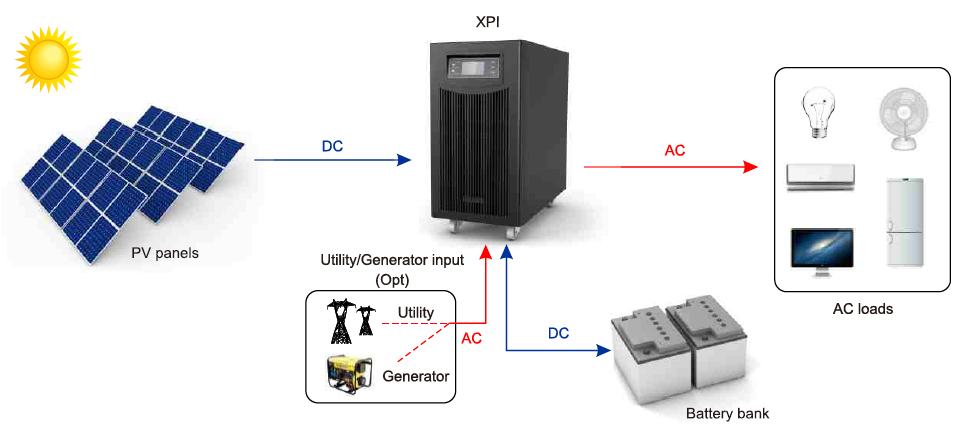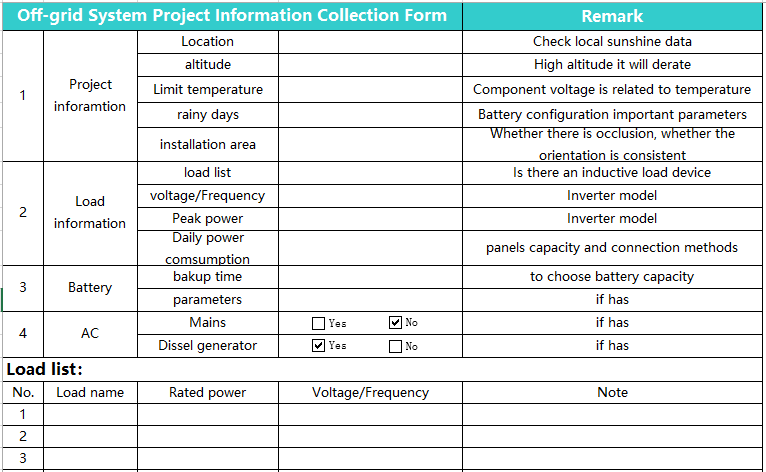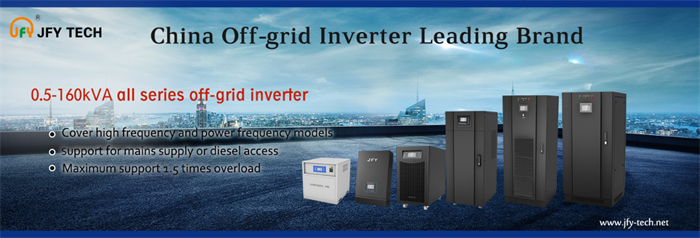Relevant Factors of Off-grid Solar System Design
Nowadays, photovoltaic off-grid systems are very common. Many customers will ask suppliers to provide system configuration solution when purchasing off-grid inverters. This article briefly discusses the relevant factors of off-grid system configuration.
Generally, the off-grid system is mainly composed of photovoltaic components, off-grid inverters, batteries, loads, mains or diesel generators (optional). In the system design, the selection calculation of each part should be fully considered. If the information is not collected complete, it will affect the accuracy of the system configuration. So what do you need to know before system configuration? Generally speaking, there are mainly the following parts.
Off-grid system application diagram
Installation address, altitude, highest temperature and lowest temperature. Knowing the installation location is mainly to query the local lighting data, in order to properly configure the PV modules. For the inverter, if its installation location is above 3000m, and the inverter derating problem needs to be considered. The extreme high and low temperatures are related to the series-parallel connection of the PV modular, because the ambient temperature affects the open circuit voltage and MPPT voltage of the PV modular. The open circuit voltage and temperature of the PV modular are negatively correlated. The lower the temperature, the higher the open circuit voltage of the PV modular. Therefore, it is necessary to calculate the voltage at the limit temperature during design, and select the appropriate serial type of PV modular.
Component installation site area, orientation, occlusion, etc. This part of the information is mainly to estimate the installed capacity of the PV modular. Secondly, according to the actual site occlusion situation, the number of MPPT circuits of the inverter is reasonably selected. In some cases where the grid-connected power station is reorganized into an off-grid project or if there is a specified component model, the relevant parameters of the component need to be indicated.
Peak power of load. The peak load power is not simply the total power of all load powers added, but the sum of all load powers that are simultaneously turned on during subsequent use is estimated. The specific configuration method needs to be reasonably calculated in conjunction with the actual situation on site.
Load details. Indicating the load name and corresponding voltage, frequency, power, etc. On the one hand, in order to select an inverter of suitable voltage. On the one hand, it is necessary to know whether there is an inductive load device in the load, such as a pump, an air conditioner, etc., which internally contain a load of the motor. If it does not have a soft start, their starting current is typically 3-7 times the rated current, so this factor should be take into account when choosing the inverter model.
Load daily electricity consumption, backup time. Estimate the average daily electricity consumption of the load. It is used to calculate the demand for PV modules to meet the load demand of one day and charge the battery. At the same time, we should configure the capacity of the battery according to the number of days of battery backup.
Battery type. For off-grid solar system, lead-acid and GEL battery are widely used. For example, JFY XPI 1-7KVA series Off-grid inverter. Compared with lead-acid battery, lithium-ion battery has much more longer lifecycle, deeper DOD(depth of discharge)and higher power density. However, it has higher cost and higher security risks. But for hybrid inverter, users are prefer to use lithium-ion battery. For example, JFY iXCEED+ series hybrid inverter is compatible with lithium-ion battery. Surely, users could choose proper lead-acid or GEL battery as well.
Considering system stability, off-grid system always needs mains or diesel generator as backup power. Most of off-grid inverter has this feature. Such as JFY ESS-B series 10-20kW and ETS-B series 20-60kW.
Off-grid System Project Information Collection Form
In conclusion, off-grid project information mainly includes the key parts information of system. Therefore, when configuring the off-grid system solution, the user can take the initiative to fill out the “Off-grid System Project Information Collection Form” to help supplier provide a more professional configuration solution.
Shenzhen Jingfuyuan Technology Co., Ltd. was established in 2003 and has been committed to the research, development, design, production and sales of photovoltaic inverters since 2010. It has more than 200 patented technologies in the power supply industry. After more than ten years of hard work, JFY has a complete line of photovoltaic off-grid inverters, with a power range of 0.5-160kW, covering single-phase and three-phase models. JFY is one of the earliest manufacturers in China to design and develop photovoltaic inverters.



